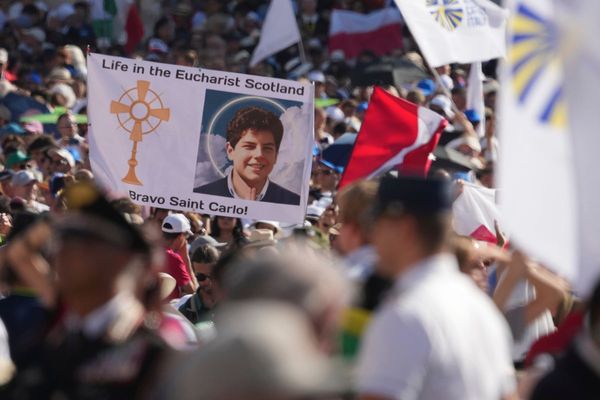WHILE all eyes have been on Hayat Tahrir al-Sham and the crumbling of Bashar al-Assad’s government, Turkey has been carrying out a parallel operation against the Kurds and their neighbours in the autonomous region of north and east Syria.
Oppression of Kurdish identity is a foundational tenet of the Turkish republic, underpinning internal suppression and external aggression; and President Erdogan long ago proclaimed his intention to clear the Kurds from northern Syria and end all hopes of regional autonomy.
He has already carried out three invasions, and now sees an opportunity to fulfil his ambitions. Besides the destruction of Kurdish hopes and lives, these include neo-Ottoman dreams of a greater Turkey, and resettlement of Syrian refugees from Turkey into the cleared areas.
Ten years ago, the Syrian Kurds erupted into international media and international consciousness. Who were these women and men (and the order of those words is important) who were taking the fight to Daesh and reversing their seemingly unstoppable charge across the Middle East?
The small Kurdish city of Kobane (now under threat again from Turkey) became viewed as a new Stalingrad, and in 2019, the last flag flying over Daesh territory was replaced by the flag of the Kurdish Women’s Protection Units, the YPJ.
The liberated lands became part of an autonomous administration that prioritises women’s rights and peaceful democratic coexistence. Kurdish Rojava is now the multi-ethnic Autonomous Administration of North and East Syria, which puts forward their living example of social inclusion and local control as a model for the whole of Syria.
Some 12,000 Kurds and their allies sacrificed their lives to make this possible. Every city has its well-tended cemetery, and every family mourns and celebrates their martyrs. But a crucial factor in this victory was American air support.
As the future of Kobane hung in the balance, the United States, which was then supplying billions of dollars of weapons and training to anti-government Islamists, recognised the Kurds as the only effective fighters against the rising threat of Daesh. They started to work with the Kurds, but, in deference to Nato ally Turkey, the US emphasised that this was a tactical arrangement, limited to anti-Daesh operations.
In their determination to destroy and overrun all that the people of the autonomous region have achieved, Turkey is using mercenary militias that are known for extreme brutality, and that have been imbued with a deep hatred of the Kurds and other minorities.
These militias, which include many former members of Daesh, became infamous in the Turkish-occupied areas, where they were put in day-to-day control and created a hell on earth. When not fighting with each other, they have looted, kidnapped, raped, murdered, and indulged in other forms of extreme misogynist and sadistic violence.
The militias are trained, equipped, and paid for by Turkey, who thus avoid the political embarrassment of dead Turkish soldiers. They are supported by Turkish planes and drones, and now, also, by Turkish tanks. Turkey has the second largest military in Nato, and North and East Syria has next to no air defence.
This time, it is the Kurds’ enemies who have air support. The United States and European countries who have worked with the Syrian Democratic Forces (SDF) in the fight against Daesh don’t want to annoy Turkey, and have allowed Turkey to act with impunity.
SO far, the only practical support the Autonomous Administration has received from America has been negotiations to allow some tactical retreats by the Administration’s determined but hard-pressed SDF, and ceasefire agreements that Turkey has immediately breached.
There has been a lot of coming and going and a lot of discussions behind the scenes, but we are yet to see further results from this.
The United States can pick and choose where to draw a red line. They have chosen not to help defend the isolated region of Shahba, which housed over 100,000 Kurds displaced from Turkish-occupied Afrîn, who have now been forced to move again.
Nor the multi-ethnic city of Manbij, where the Administration had been promoting peaceful cooperation after its liberation by Kurdish forces in 2016. Manbij’s new occupiers have been publishing videos of their own atrocities in the city.
America hasn’t stood in the way of Turkey’s fatal drone strikes on civilian areas, nor of their blatant disregard of the recently agreed ceasefire, just as they never stopped Turkey’s regular bombardments and assassinations following the US-guaranteed ceasefire agreement that ended their 2019 invasion. The SDF have been on their own defending the vital Qere Qozaq bridge over the Euphrates and the now-damaged Tishrin Dam.
The people of North and East Syria have to work out how to preserve fundamental principles while working with the forces that surround them. It is a question of survival. An end to US intervention, though ultimately desirable, would simply mean handing control to Turkey.
Kurds are demanding that the US and its allies (including the UK) put pressure on Turkey to end its attacks and to allow Kurds and their neighbours to live in peace and contribute to rebuilding Syria. Rojava brought a beacon of hope to the Middle East and the world, and today will see demonstrations in cities across the world calling for that hope not to be extinguished.
Sarah Glynn writes a weekly review of Kurdish news for Medya News
www.sarahglynn.net @sarahrglynn @sarahglynn.bsky.social
Practical help for internally displaced people who have escaped the aggression of Turkey’s Islamist mercenaries can be offered through the German office of the Kurdish Red Crescent, Heyva Sora Kurdistane
Rojava Information Centre provides useful background and updates from the region







